Schidt Optics FF58 Lens on the Sony A6000
by Jeroen de Lang
What is this Schidt?
Dog Schidt Optiks is a small British company that re-purposes salvaged Russian and East German lenses. Their FF58 is built around the Helios 44 that were made in the former USSR by the thousands (some claim millions) between the 1950’s and 1980’s. They were usually supplied as a kit lens with Zenit cameras and thus usable with other M42 lens mount cameras. The Helios-44 is a 58mm f2-f16 prime. At the end of WW2 the Russians acquired the Carl Zeiss Biotar optical formula and factory. The Helios-44 is basically a Biotar copy.
Each lens is completely dissembled, cleaned, relubed and rebuilt with uprated mechanical components, then individually configured to the clients’ specification. Dog Schidt Optiks (DSO) are able to apply a variety of optical degradations depending on your desired look. This, in combination with what they call their non-production line, craft based approach means each lens has its own nuances in character. It costs more than picking up a Helios-44 on eBay, but it is not the same lens!
Whether you want a subtle low contrast lens that absorbs and reacts with the natural ambient hues of your shooting location, a nearly unusable ultra-low contrast lens with wild tinted and almost light leak type reactivity to light sources, or a lens that simply imparts oval deformed bokeh to replicate the look from an anamorphic lens system, the FF58 can be configured to deliver these and many other qualities. You could even go for a restoration only, completely without degrading or tinting with the original contrast intact. This option is not on the site, but DSO will build whatever you specify. The FF58 is available in Canon EF, Nikon or Arri PL mount.
A lower contrast lens absorbs the natural light and creates a shadow lift. This shadow lift causes degradations in the shadow information, but using a typical lens the darker areas would simply be masked by more noise since the shadow lift would no longer be feeding the sensor with light. This makes for milky images or a distinctive lo-fi aesthetic if contrast is raised in post.
The FF38 is another beast entirely. Newly designed as a direct extension to the optical make-up of the FF58’s double gauss design, the FF38 Optical Attachment delivers a 38mm effective focal length without degrading the optical performance of the FF58, even when used wide open. The FF38’s primary goal is to deliver around a 1.5x wider field of view while maintaining the aesthetic and flare characteristics of the FF58 it is installed onto.
The FF38 Optical Attachment boasts an 80mm front diameter suitable for direct matte box attachment, and 77mm filter threads for filters. FF25 and FF88 Optical Attachments and an FF58 Non-optical Attachment are under development – each sharing the same external body design and 77mm filter thread. This strategy makes it possible to build up a shooting set where optical characteristics and aperture settings (dictated by the configuration of the FF58) are uniform across all four focal lengths (25mm, 38mm, 58mm and 88mm). Therefore it is possible to build up a set of various FF58’s of different optical configurations while only needing one of each front mounted Optical Attachments. With the supplied adapter ring the FF38 will also work with other 55mm thread lenses.
A FF58 will set you back between £140 ($225) for Canon EF mount to £260 ($420) for Arri PL mount. The FF38 is still on pre-order and is priced at £280 ($450).
The ordering process has been slow. Lead times have been between 4-6 weeks from the date when I placed my orders to the date where I get a confirmation of shipping. Email contact during the process is limited. DSO is essentially a one man operation and the process is fully bespoke, with each lens built one by one. This takes time. DSO will test your patience. Just so you know. But all good things come to those who wait, right?
Is it the Schidt?
Digital photos have become too clean in my book. The FF58 adds a more lo-fi look with an analogue aesthetic that you cannot get elsewhere at this price, as far as I know. I am but an amateur so using old glass is beyond me. I would not even be able to perform even the simplest of repairs.
As for the tinted options, unlike typical front mounted filters, they only activate when exposed to large amounts of light pooling the lens barrel. The lens creates dynamic shifts in overall hue which are often unpredictable. Since this effect originates within the physical domain rather than software, the ‘baked in’ look and tactile nuances impart a beautifully analogue feel to digitally acquired and processed imagery. And you can see them real-time as they occur in your viewfinder or camera screen.
My first FF58 has a low contrast but no tinting or degrading. Flaring can be controlled, but when it flares, it flares! The FF38 opens more possibilities by changing the focal length of the FF58, but maintaining my selected optical characteristics. On my Sony Alpha 6000 I use it with a Roksen Focal Reducer Speed Booster Adapter Canon EOS EF mount lens to Sony NEX E A6000 converter. This applies a 0.7 times magnification so I can use it at the original 58mm focal length even on the APS-C sensor.
I liked shooting with the FF58 so much that I was one of the first to pre-order an FF38 attachment. Mine is number six. I also now own a second FF58. This is an amber / gold tinted one with a fixed F4 triangular aperture.
My lenses are one of a kind and have clearly been lovingly crafted to my own spec. I only wish the bokeh would be smoother, but at this price I can live with it. It is also the price you pay for shooting with a lens based on a 70 year old design.
One more thing: the aperture is labelled wrong. F2 is actually f16 and vice versa. This does not bother me. I shoot with three aperture settings: f2 when I want a shallow depth of field, f16 when I want clarity and somewhere close to f2 when I shoot portraits and want more of the face to be in focus. But such a thing could drive some people up the wall.
A word of warning
These are not modern lenses. Character means imperfections. Lots of them. If you want to pixel peep you will find all kinds of wackiness. They are fully manual as well. Definitely no auto-focus and such.

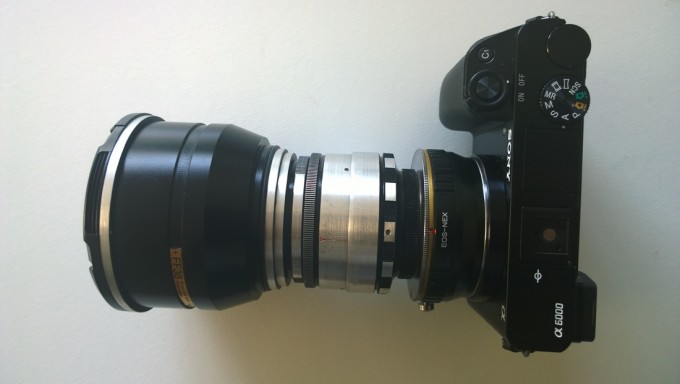
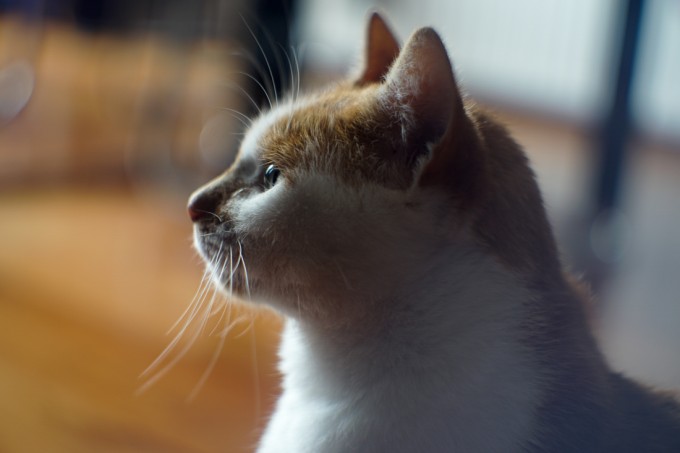
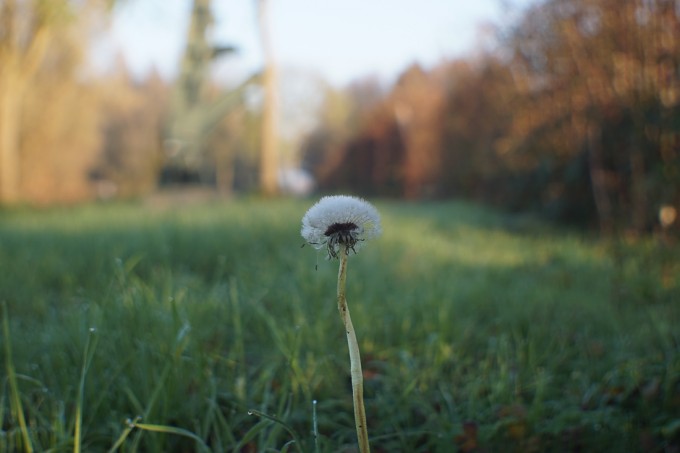
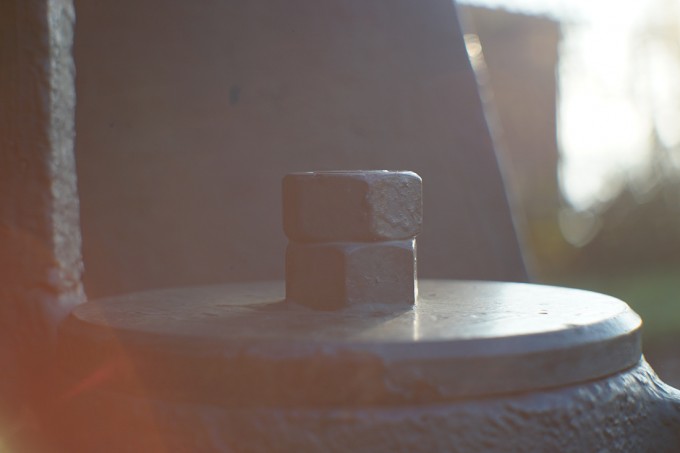
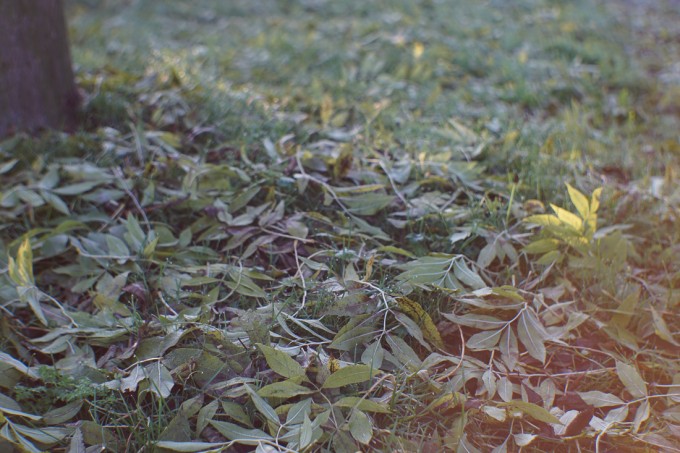
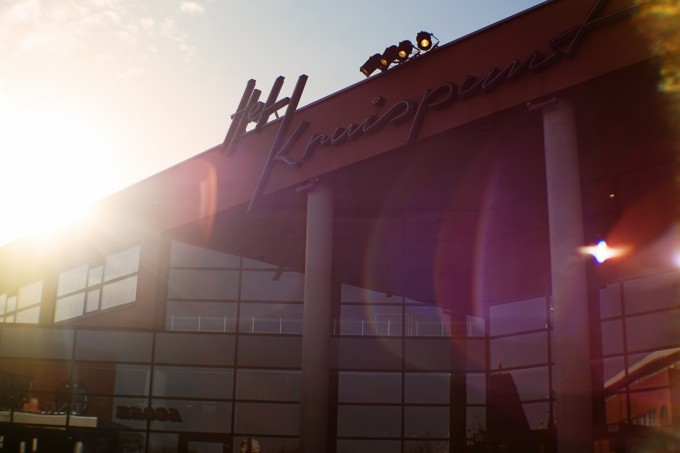
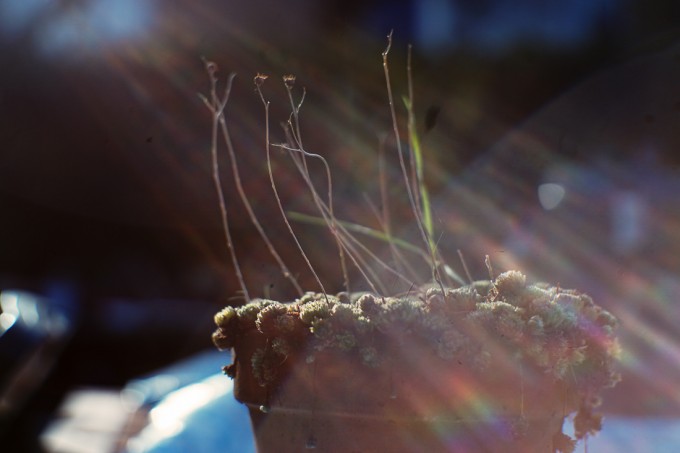
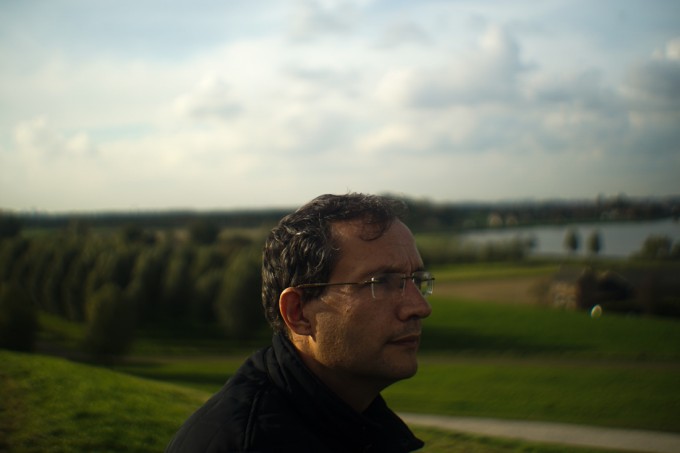
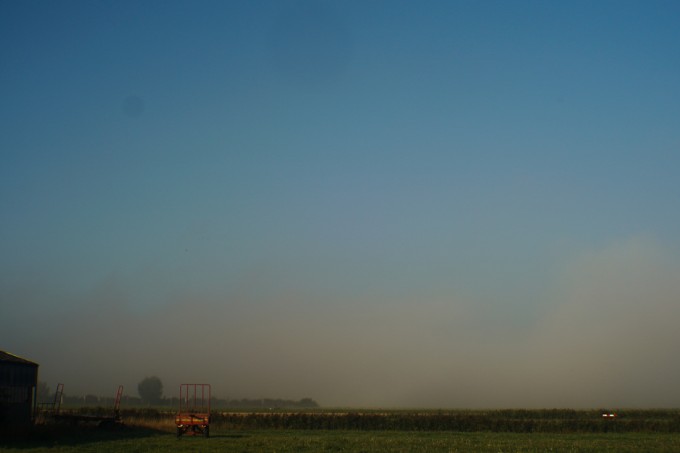


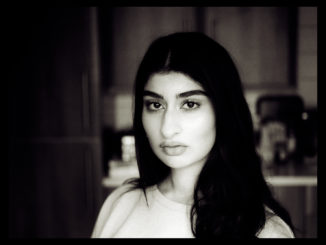
I think the possibilities available these days to use virtually ANY lens on a mirrorless camera opens up a realm of endless fun, experimentation, creativity and outright unique artistic photography. No film cost wasted with failures, digital is almost free… what more could anyone want? Photographers half a century ago could hardly even dream of what is available to us today. Great article Jeroen, and I love the cat portrait!
Regards,
Don Bate, New Zealand.
Your images are beautiful. I own the FF58 and the FF38 adapter and it’s the perfect setup for certain situations. I use it on the Canon 5D Mark io and it works a treat. I have Canon L glass, vintage Nikon glass, fast Samyang glass, it’s about choosing the right lens for the shot.
Being a video enthusiast myself, I have heard of these lenses before. What they offer is kind of interesting for video, but less for pixel peeping photographers. Also, their attitude is subversive and insulting (check the company’s logo), except for the English, because they like this a lot, apparently!
I really do not approve of this ethno centric contemptful and patronizing attitude… “Dog Schidt Optiks” is an insulting trade mark for good lenses from the east. All of these originally German designs had short comings – compared to contemporary lenses of today. In the fifties and sixties – all lenses were worse than today. Try to compare with the Japanese production from those years! The West-Germans didn’t perform that well either. In many ways these USSR lenses did outperform most of the Japanese lenses of that time. These “ruskies” performed very well at the time, and if You use them right, they will serve You well now!
High dispersion glass was not used by anybody in those days. 1958 the USSR had the most sophisticated MC around, but it was too expensive to use. However they won three Gold Medals for optics at the world fair in Bruxelles.
“Dog Shit”, my ass! These German Biotar designs were great, and still can produce very nice pictures. They are sharper than many zoom lenses, and have less distortion and CA than most kit-lenses of today. You can make marvelous portraits with these lenses, especially when You use them on a camera without AA-filter. Bokeh is great! But remember that they do not have MC, so keep the sun behind You! Don’t use a Canon camera, use a Sony A 7 S or the 2015 “R”.
I want to be a hipster.
So there’s life in the old dog, yet. :D)
“Digital photos have become too clean in my book. The FF58 adds a more lo-fi look with an analogue aesthetic that you cannot get elsewhere at this price, as far as I know.”
There is tons of excellent, inexpensive, manual focus glass out there. For $40 you can get a Canon FD 50mm or a Nikon AIS 50mm. You could even get the f1.4 versions for $75 or less. These lenses will perform MUCH better than that one.
I hate to sound negative, but that is one bad looking lens, especially for the price. For $225 you could have gotten a set of quality Japanese-made SLR primes
And the name Schidt Optics…. Honestly, is this a prank?
Time to whip out my fifty year old Zenit, Helios and some obscure expired colour film. Now where did I put that camera…
I enjoyed this quite a bit!
Thanks for the article and the great photos.
Best regards,
Mark
Crazy lens excellent photos well done !
Thanks for the well written article! The photos were good too.
These are a bit too “dreamy” for my taste. I did enjoy the article.
After first checking the calendar for 1st April, I re-read the article. Somehow I seem to miss the point here?
What if I buy a cheap 60’s-70’s era manual focus lens in M42 mount for a tenner or two, slap a cheap uncoated UV filter in front and flare the hell out of this to combo?
Not meaning to troll by any means, I have plenty of those nifty ones lying upstairs, like Jupiter, Cosinon, Petri, which I bought for much less.
Great Glass…. Thank You for this…
I had to do a double take and make sure it wasn’t 1st April. I suppose this shows that if there is Schidt to be sold, someone will buy it.
You couldn’t be more wrong. Those are actually great lenses in many way, at the opposite of the too surgically perfect L lenses.
It takes a lot of work, handmade by just a handfull of guys. And it take time to handle well but results can be awesome. Sure we’re not talking charts and razor sharp, it’s about the feeling. Each lens is tailor made with a number of specifications you can decide yourself, like fixed oval aperture for exemple (why would i want i fixed oval aperture are you asking, well guess, many people actually want this 😉 and there’s no stock, they make them per order.
Of course they’re not for everybody, it’s what you call a niche market, but there’s a reason the waiting list is so long, it’s because many people actually want a lens like this one. You might not like it, but your disdain doesn’t make you right.
Michael, in his reply #11, has been more genteel in his comments than I, but the view is basically the same. The word “disdain” didn’t come to mind originally, but I think this is very apt from my perspective. Why? I’ll tell you.
For decades the likes of Leitz, Zeiss, Schneider et al strove to produce lenses of optically superior performance. Now, with sensor manufacturers striving to produce better and better sensors we see the likes of Schidt lenses putting this all to waste. And, no, I simply don’t get it. I suppose it is a phenomenon of the digital age for many photographers who’ve not gone through the mill of struggling to improve their film photography and where the likes of this lens wouldn’t be given shelf room.
See it as a custom made toy, a lens to experiment and play with. It’s not THAT serious.
Of course Zeiss and Leitz make the best lenses, nobody’s denying that. They can actually coexist, never should anyone have to chose between a Zeiss and a FF58, they’re not intended in the same way at all !
It’s like saying “A Diana is such garbage compared to an Hasselblad”… well yes, of course it is, nobody’s shooting fashion with a Diana, you just play with it.
“Cool-Schidt”…
I had a professional photographer request that I make him an RF coupled, single-element 50mm lens for his M9. “Leica-Diana” he called it. It’s the look he wanted with the camera he was using. My personal favorite hack- a CaNikkor, half-Canon 50/1.5+Half-Nikkor 5cm F1.4, RF coupled.
Old-style lenses can be fun to play with. The big reason I still shoot 35mm sometimes is because I like the less clinical look of vintage glass, especially when shot on film.
But to reiterate my point below, there is TONS (literally) of vintage lenses out there for practically nothing. Why pay someone over $200 for something you could get for $30? In fact, you could probably find similar lenses at Goodwill for $5.
Saying the FF58 is carefully handmade by a boutique lens company doesn’t change the fact that the optics are, objectively speaking, quite terrible. It’s like paying $20 for a six pack of carefully handcrafted beer that tastes just like Coors Light.
Cool 🙂
The look of this ugly lens is not very attractive at all!